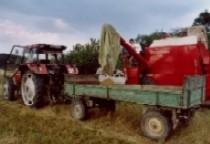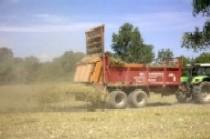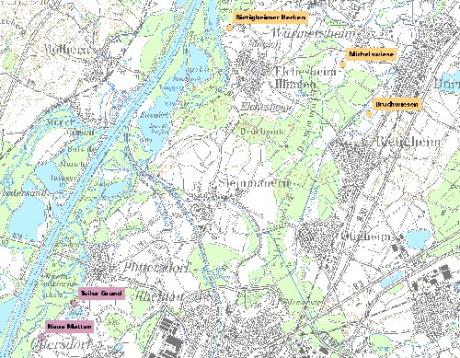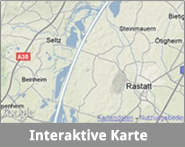Development of species-rich meadows of the planar zone and of molinia meadows
In the Rhine floodplain species-rich oligotrophic meadows have rapidly declined. Even stronger was the reduction of litter meadows which are only mowed in autumn. Both meadow types are endangered at European level according to the Habitats Directive. for the measures 13 ha of former meadows were selected which have been abandoned and are increasingly overgrown. The original grasses and herbs have nearly disappeared.
How to establish species-rich meadows
The development of species-rich meadows starts with the removal of shrubs and trees, and the sites will be mowed. The cuttings will be taken out. Then the sites are ploughed and soil is loosened with a harrow. The new seed material is decisive for the success: it has to come from meadows in the surrounding (i. e. originating from the “natural area”). If the seeds have ripened the meadows will be mown with a specific harvester. The hay will then be spread out on the new sites. This method even allows the transfer of insects, mosses and fungi. Further information on greening measures with regional seed material you will find here.


Already in the years 2004 to 2007 several hectares of species-rich meadows at the Schafköpfel and in the Murgwinkel have been established in this way in the nature reserve Rastatter Rheinaue. Today these meadows have colourful flowers and are full of insects.
One meadow is not like another
Which type of meadows develops depends on the soil, the moisture and the use. Species-rich meadows of the planar zone grow on intermediate site conditions – not too dry, not too moist and not too nutritious. Usually they are mowed twice per year. This type of meadows is to be developed near the Bietigheimer Hecken, on the Michelswiese and on the Bruchwiese. (orange dots on the map).
If the site is at least temporarily moist or particularly nutritious the development of molinia meadows is possible. They are only mowed once per year. The cuttings are very dry and hard and usually are not eaten by farm animals. In former time they had been used as litter in regions with little straw, therefore these meadows are also called litter meadows. Such litter meadows with molinia will be established in the Teilergrund and in the Neue Matten (dusky pink spots on the map).

Aim of the measure
Presently there are only 7 ha of meadows which are in an excellent conservation status. The establishment of the new meadows will provide more sites full of flowers as habitats for butterflies, grasshoppers and wild bees. At the same time the meadows will be connected in a network improving the exchange of individuals. This is very important for the long-term survival of the species. A typical example for these meadows is the scarce large blue.



